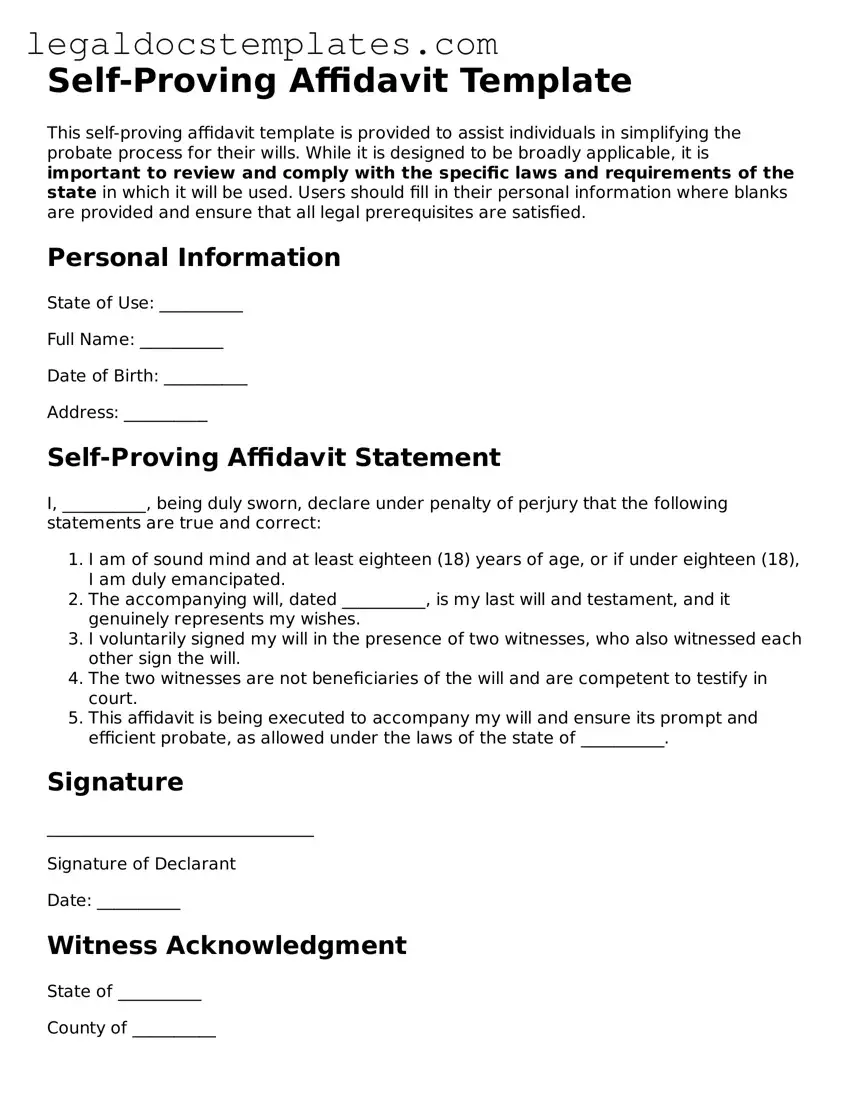Self-Proving Affidavit Template
This self-proving affidavit template is provided to assist individuals in simplifying the probate process for their wills. While it is designed to be broadly applicable, it is important to review and comply with the specific laws and requirements of the state in which it will be used. Users should fill in their personal information where blanks are provided and ensure that all legal prerequisites are satisfied.
Personal Information
State of Use: __________
Full Name: __________
Date of Birth: __________
Address: __________
Self-Proving Affidavit Statement
I, __________, being duly sworn, declare under penalty of perjury that the following statements are true and correct:
- I am of sound mind and at least eighteen (18) years of age, or if under eighteen (18), I am duly emancipated.
- The accompanying will, dated __________, is my last will and testament, and it genuinely represents my wishes.
- I voluntarily signed my will in the presence of two witnesses, who also witnessed each other sign the will.
- The two witnesses are not beneficiaries of the will and are competent to testify in court.
- This affidavit is being executed to accompany my will and ensure its prompt and efficient probate, as allowed under the laws of the state of __________.
Signature
________________________________
Signature of Declarant
Date: __________
Witness Acknowledgment
State of __________
County of __________
We, the undersigned, do hereby declare under penalty of perjury that we witnessed the signing of the above declaration by __________ (name of declarant), understand it to be their will, and signed our names as witnesses on this day, __________.
Witness #1 Name: __________
Signature: ________________________________
Date: __________
Witness #2 Name: __________
Signature: ________________________________
Date: __________
Notary Public Acknowledgment
This document was acknowledged before me on __________ (date) by __________ (name of declarant) and the witnesses named herein. They all duly swore or affirmed that the information provided in this self-proving affidavit is accurate and true to the best of their knowledge and belief.
Notary Public: __________
Signature: ________________________________
My commission expires: __________
Important Notice
This template is provided as a general guide. Laws vary by state, and it is essential to consult with a legal professional to ensure that all state-specific requirements are met. The use of this template does not substitute for the advice of an attorney.
